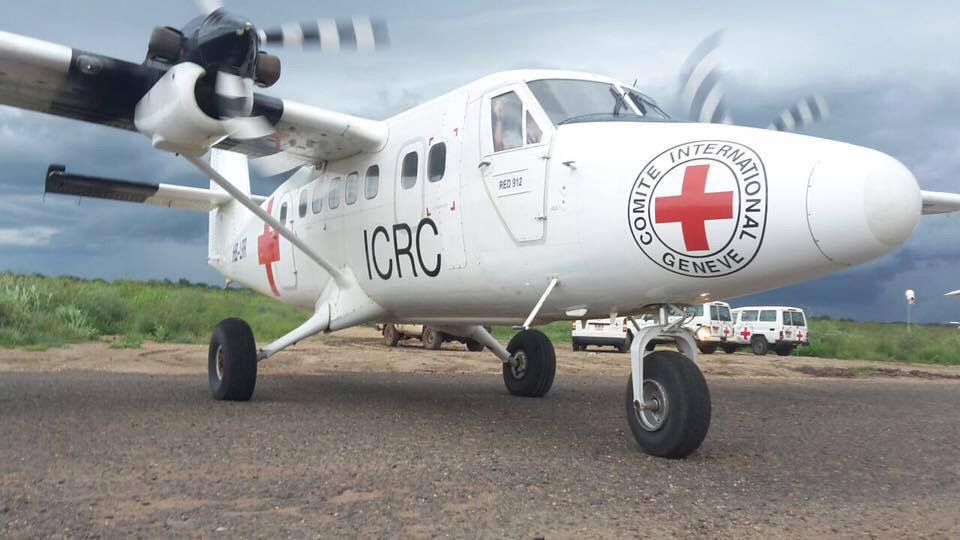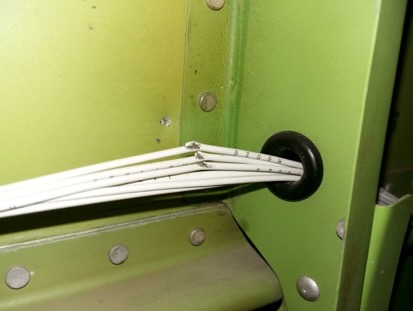By Emily Hewitt
I have been working at the Coeur D’ Alene tanker base over the summer, where I ran into Angie Tanton, the pilot for the C-130, getting her steps in for the day on the ramp. I noticed her lovely smile and a tattoo on her right arm of a lady stabbing the Grim Reaper in the back. I asked about it as that was an interesting “not today” image. She told me she flew a plane hit with shrapnel and survived. Angie, who turns 50 this summer, grew up in British Columbia and Alberta, where she also learned to fly. Her interest in flying was ignited on a career day when she was 16 in Canada, where a flight school handed out pamphlets saying, “You can be a pilot.”
She went for a familiarization flight, and she fell in love. She didn’t get the marks to enter the military, but undeterred, she enrolled in flight school. In 1992, she started her flight training in a Cessna 172 and became a certified pilot in 1997 when her career took flight. She flew on the coast of British Columbia, Maldives, Burma, the Arctic, Saudi Arabia, and numerous other places on float planes. She had been flying in South Sudan in 2012/13, flying for the United Nations.
In 2015, She tried a different brand of humanitarian flying with the International Red Cross. This is where the story of the tattoo begins. On February 23, 2016, in the young country of South Sudan, Angie was flying a twin otter, evacuating Red Cross employees who were in danger due to political tensions between different factions in South Sudan. She had two stops and would drop the workers off in a safer location. She picked up seven people at one stop, and then at the next stop, she would pick up two more in Pibor, South Sudan. When she landed at the second stop, It was a 3000’ runway with a parking lot in the middle of the runway. Off the plane's left was the runway and the town; off the right was the U.N. building and the Red Cross truck and people.
When she parked, everything appeared normal as she turned her radio off. She still had six passengers and her co-pilot in the plane. Her co-pilot said, “I haven’t done our H.F. call, but we have landed yet.” Angie turned her radio back on. In hindsight, thank God her co-pilot was slow to call in; otherwise, she would have shut down her engines and not had time to get them running again. With engines running and her headset on, she noticed little grey specs in the parking lot and figured kids were throwing rocks again. Her brain was formulating what would make sense. She looked to her right, where her co-pilot was sitting, and saw a red cross worker on the plane bent over; she thought, oh, he must have diarrhea, “I bet he feels terrible and has cramps, and I hope he doesn’t crap in this plane,” She looked back at her first rows and passengers were huddled down on the floor.
Angie asked, “What are you guys doing?!” They pointed to the left and yelled, “They are shooting at us!”. The passengers had more windows and could see better than Angie. She looked to her left and saw people running across the runway and explosions on the far side of it. She realized what was happening and told her co-pilot, “They are shooting at us; we need to take off!”. All Angie wanted to do was get out of there and decided taking off was their best option. She looked to the right, and the Red Cross workers were gone. She worried they were trying to get on the plane but knew she couldn’t wait for them. She looked left, and hundreds more people were running across the runway. She couldn’t take off into the mass of people so she chose the other way but there was a man with long dreadlocks and a “Bob Marly toque”. She slammed on the brakes and waved him out of the way. Once she had cleared, she took off. Angie doesn’t remember preparing the plane to take off. She had subconsciously known what she needed to do. Angie had her rudder locked out, flaps down, and propellers forward into take-off position, and at this point, all she had to do was add the power. As soon as she got in the air, she leveled off and did not turn away from the airport. The co-pilot screamed, “Why don’t you turn?!”. That shook her out of her auto-pilot mode, and she told him, “I am good I am going to fly the plane, get on the satellite phone and start making calls”.
Angie didn’t relax or take a breath till they got to their safe destination. She returned to the plane and got hugs from all her seven passengers. After the cigarette, hugs, and returning to reality, they examined the aircraft. There were holes in the aircraft. It was mortar shrapnel. It had lodged into the plane in some regions of the fuselage. It didn’t hit the fuel tanks or any crucial wires. She had asked a tall guy to ride in the back of the plane in the emergency exit where the leg room was as she wanted to balance her weight. He said he didn’t want to sit in the back, and she didn’t argue. His being adamant about where he sat saved his life when a piece of shrapnel went through the emergency exit door by that seat at head level. The staff she left behind that day did not leave Piborn and had to stay in the bunker for three days till they could come and get them. The reason for the attack was that someone did not agree with the new governor of the area, and they thought he was on the plane. They do not transport political figures, only Red Cross workers. They are a neutral organization, and the plane had a big red cross on the side of it.
Everyone on the plane that day had a different experience. This is Angie’s experience. Angie flew the aircraft back to Juba, where her coworkers were and where she felt safe and at home. She figured it flew, and it would fly again. In hindsight, she maybe should have had maintenance look at it, but she was fixed on returning with her colleagues, which she considered her safe spot. She took one day off, and then she was back at work again. Some of the others were traumatized by that day, but Angie felt fine. She asked a Red Cross doctor about it, worried if she was cold or internalizing. He said everyone’s brains are wired differently. It would be interesting to hear the perspectives of the others that day.
Angie had close encounters with death before and after during her work in South Sudan. Previously, there was a suspected RPG (rocket-propelled grenade) shot at her plane. In July 2016, there was a lot of fighting in Juba; everything shut down, and she was stuck in the hotel for three days with her coworkers with tanks and bombs outside. The town was running out of food and diesel for the generators. In September, she returned to South Sudan, and her first flight was medevacs for wounded rebel soldiers. There was so much tension in the area. They were pulling people off airplanes that were trying to escape and beating them. She was standing there, almost shaking, thinking about where I would go if they started shooting. It took that moment for her to realize she didn’t want to do this job anymore.
Angie finished her rotation and never went back. At this time, her children were 10 and 12. I asked, “How could you do this dangerous work as a mother.?” Angie had 50/50 custody, so when she was with her children, she was always with them. She worked five weeks on and five weeks off. She was fully present for her children when she had them. Angie grew attached to an orphanage in South Sudan, and her kids were proud of her work. Her kids would donate their toys to this orphanage and FaceTime with the kids there. She was drawn to the humanitarian aspect of the job. Angie has chosen the safer career path of flying low and dropping retardant in a C-130.













